Learn about Virtual Private Network - VPN and Tunneling
When it is necessary to deploy a system to ensure safety, stability and flexibility to meet the requirements of businesses and organizations, one of the most selected and applied options is: Private Network , Hybrid Network and Virtual Private Network . In the following article, we will learn about each system, discuss specific Virtual Private Network, VPN tunneling techniques, different VPN modes, how to configure and set up a model. Complete VPN image.
1.Private Network:
This is a separate type of LAN system that uses IP addresses to share data between connected nodes. In this type of model, applications and data ports (used to manage connection protocols) are specifically designed to increase security. Private Network is suitable for offices, companies with all computers, network devices in the same place, and if Private Network is deployed in many different locations, the administration department will have to buy more transmission lines. Dedicate , to ensure the data transmission process is smooth during operation:
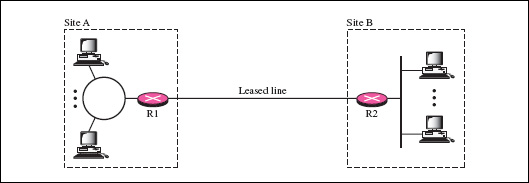
2.Hybrid Network:
This model is a little different from Private Network , designed specifically for the company's headquarters, the main office and the ability to access and process data on a large scale. Hybrid Network system combines all technical features of Private and Public network to communicate with the external environment, but still ensures the security of the business. In terms of functionality, Hybrid Network will navigate all links, share data via Private Network, while the rest of the system, along with data sending, importing or processing information will Go through the Public Network path. Like Private Network , the process of deploying this system model requires users to have a fixed line - Dedicate to ensure the communication and monitoring process as well as manage the amount of information inside is stable. to:

3. Why businesses use VPN:
In terms of technical nature, Private Network can ensure the safety of data sent and received, as well as the transmission speed. This simple network system model requires only one fixed line to send and receive the information that has been checked, but after deploying Private Network , we must apply Public Network to communicate with external environment. And this is also the cause, leading to the development of Hybrid Network, with many advantages combined from Private and Public Network . However, Hybrid Network will use 2 fixed lines for separate Public and Private connections. For example, if an organization has 4 different branches, it will require a secure connection to the network, besides access to the WAN system. And to solve this problem, many businesses have chosen and used Virtual Private Network.
4. Virtual Private Network - VPN :
As mentioned above, Private and Hybrid network systems are quite expensive and have separate lines to connect to nodes . VPN technology has helped users to cut a lot of initial costs as well as incurred compared to Public and Private Network systems, while allowing businesses and organizations to use WAN communication to connect to the system. public and private respectively. The reason why is called virtual system - because this model does not require physical equipment to secure data transmission. VPN technology uses many different information encryption modes to prevent unauthorized intrusion from hackers, malicious programs or common system attack methods, specifically using VPN Tunneling techniques to ensure the level of data security, easily compatible with many other technical systems:
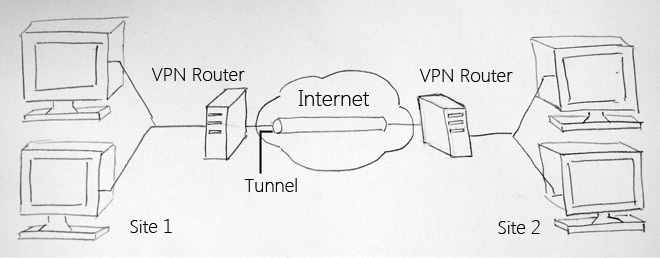
Operation mechanism of VPN:
In fact, the way VPN works is quite simple, not much different from the usual server - client models. The server will be primarily responsible for storing and sharing data after encryption, monitoring and providing gateway systems to communicate and confirm client accounts during the connection process, while the VPN client is also compatible. As the client of the LAN system, will send requests - requests to the server to receive information about shared data, initiate connection to other clients in the same VPN system and handle data security process. via application provided.
VPN Tunneling:
This is the most fundamental difference of VPN compared to normal LAN. You can imagine this is a kind of tunnel in the Internet cloud through which requests to send and receive data work.
Tunnel concept has helped us to better understand the operational model of VPN network. When users initiate connection or send data via VPN, Tunneling protocol will be used by VPN network (eg PPTP, L2TP, IPSec . ) will 'pack' all this information into 1 package. Other, then encrypt them and proceed to send them through the tunnel . At the end of the receiving address, the tunneling corresponding operation protocols will decode these packages, then filter the original content, check the origin of the packet as well as the information and data already other classified.
Tunneling Compulsory and Voluntary:
The Tunneling classification is based on the origin of the connection. And through that, there are 2 main types: Compulsory and Voluntary Tunneling.
- Compulsory Tunneling is usually initialized by the Network Access Server without requesting information from the user. Besides, VPN clients are not allowed to access information on VPN servers , since they are not responsible for controlling newly created connections. Compulsory Tunneling will work immediately between server and VPN client, taking the main function in confirming the legality of client account with VPN server.
- Voluntary Tunneling is different, is created, monitored and managed by users. Unlike Compulsory Tunneling - usually managed by service providers, this model requires users to directly initiate connection with ISP units by running the clien VPN application. We can use many different VPN client software to create highly secure tunnels for each private VPN server. When the VPN client program establishes a connection, it will proceed to determine the VPN server or user-specified. Voluntary Tunneling does not require too much, except installing additional tunneling protocols on the user's system.
5. Different types and techniques of VPN:
- PPTP (Point-to-Point Tunneling Protocol) VPN is the simplest VPN technology, using Internet connection provided by ISP to create security tunnel between client and server or client and client. PPTP is a VPN- based application, you probably know that Windows has built-in PPTP functionality, and all that is needed to connect to the VPN system is just a VPN support software. client. Although PPTP does not have a number of security mechanisms to secure the flow of information and data ( Point to Point Protocol takes care of this with PPTP ), Windows, basically, has carried out validation and encryption with PPTP to previously encoded packages. The advantage of this model is that it does not require additional external support hardware to deploy, and the client system can use the software provided to connect to the VPN server. However, the disadvantage of this type of system is based on Point to Point protocol to increase the security of data packets, so before these packages start to "pass" the tunnel, they can still compromised from external sources.
- SSH (Secure Shell) Tunneling uses secure shell protocols to create separate tunnels to transfer data from one point to another. The biggest advantage of using tunneling on SSH is that it is easy to 'bypass' the bypass Internet firewall system. Typically, organizations (who need to force employees to use a fixed proxy server to access websites and private documents) use the SSH protocol to navigate the entire traffic from the dedicate server . There is a slight difference from SSL- based VPN , where HTTPS protocol starts taking effect on applications, management systems, web browsers . to secure data transmission between devices. Outside to the established VPN network, only two HTTPS protocols are required to initiate the connection between the two endpoints.
Developed by IETF, IPSec is primarily responsible for securing IP connectivity between the endpoint of the system and VPN tunnels. Data packets 'going through' IPSec will be encrypted by AES, DES or 3DES . Besides, it also provides additional data compression function and account confirmation for different network layers. IPsec VPN technique uses instead of transport tunnel mode. Before sending data, the system will proceed to 'pack' the IP package into a new IP package, then assign an additional IP header layer, accompanied by ESP - Encapsulated Security Payload header to improve security. In addition to ESP , this model also uses AH - Authentication Header as a support protocol to apply the security layer to the original information and data.
Microsoft has partnered with Cisco and developed an alternative protocol for PPTP, L2TP - Layer to Tunneling Protocol to integrate more data. However, it should be noted that L2TP , like PPTP, does not provide additional information encryption mechanisms based on PPP - Point to Point Protocol to encode different data layers. L2TP tunneling will add L2TP header data to the original payload layer, then move to the last point in the UDP diagram. Besides the Point to Point protocol, security and account authentication can be done by applying IPSec in the network layer.
6. Set up and use VPN:
In fact, there are many ways to create and set up VPN systems for customers, clients and company branches in different parts of the world, so they can be easily shared. Personal information, providing gateway to communicate with external networks.
Connect to remote VPN network (Office VPN):
Like previous Windows operating systems, Windows 7 already has a basic way to connect to a VPN server. If the user intends to connect to the office, PPTP / L2TP VPN network, you can use the VPN client program to start at the connection.
Before starting to proceed, please make sure that you have configured it, set up the device according to the instructions of the system administrator. Next, open the Network & Sharing Center, select the Set up a new connection or network link , the Connection Wizard window will appear , and select Connect to a workplace and Next :
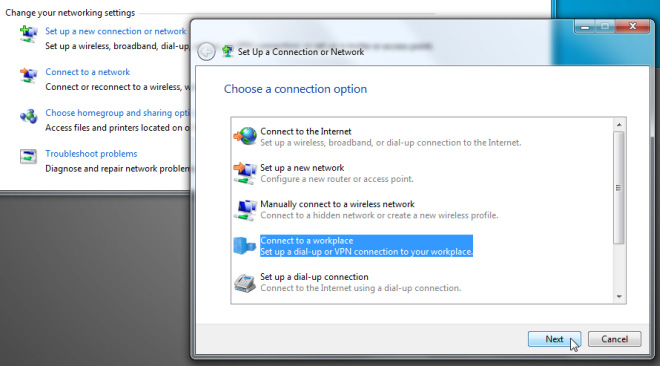
Next, select the connection type to use:

Here we choose Use my Internet connection (VPN)
At the following screen, you need to enter the corresponding information provided by Admin, namely IP address, domain, or via smart card device:
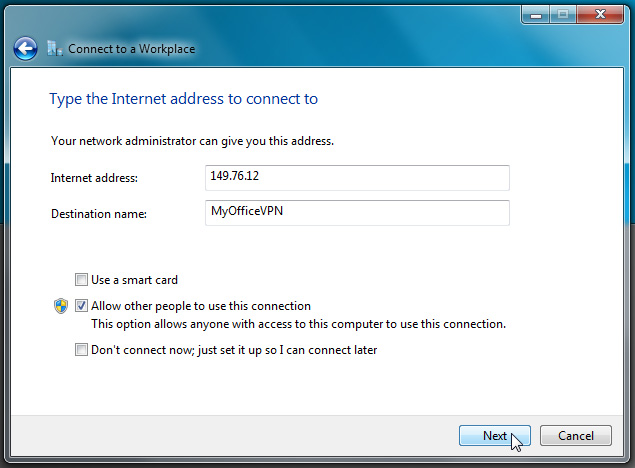
After clicking Next is the last step of this setup process, you need to enter the Username and Password provided by Admin :
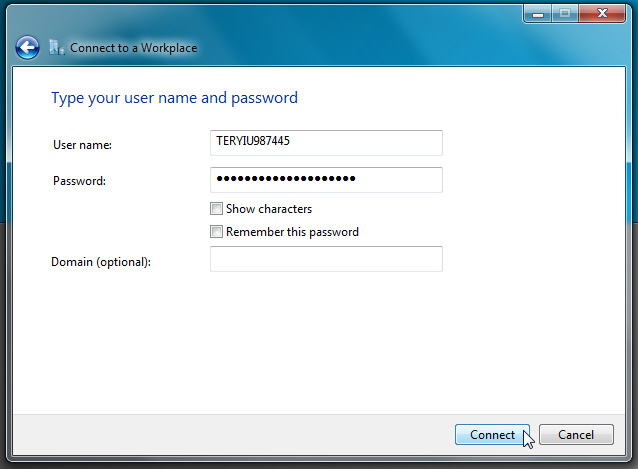
Then, click Connect to begin the process of connecting to the VPN . When done, you can check the details of the IP address from the Network and Sharing Center or type ipconfig command in the Command Prompt.
With some of the above technical features, we can see that Virtual Private Network is one of the best solutions for securing personal or corporate data when it must be transmitted to many other locations. each other, easily meet the security and security needs of the model. Compared to other paid systems with similar functions, VPN technology deserves one of the hardest to beat in creating and managing data processing centers.
You should read it
- What is split tunneling?
- What is SSTP (Secure Socket Tunneling Protocol)?
- L2TP (Layer 2 Tunneling Protocol) price?
- VPN theory - What is a virtual private network?
- How to create a VPN server on Windows without using software?
- What are IKE and IKEv2 VPN protocols?
- What is an Access Point? Should I use an Access Point, Router or Modem?
- Check the TMG 2010 virtual private network server - Part 2: Configure TMG Firewall as the PPTP Remote Access VPN Server
May be interested
- Opera VPN will stop working on Android and iOS from 5/2018
 recently, opera has announced it will officially close the service of providing virtual private network (vpn) on two android and ios platforms after two years of operating in free mode.
recently, opera has announced it will officially close the service of providing virtual private network (vpn) on two android and ios platforms after two years of operating in free mode. - How to Install and Use a VPN on Windows 11
 a vpn is a virtual private network, virtual private network, which is a networking technology that helps create a secure network connection when participating in a public network such as the internet or a private network owned by a service provider.
a vpn is a virtual private network, virtual private network, which is a networking technology that helps create a secure network connection when participating in a public network such as the internet or a private network owned by a service provider. - Create LAN over the Internet with Hamachi
 hamachi is a virtual private network (vpn - virtual private network) that uses the udp protocol with 'open security architecture'. each computer connected to the hamachi network for the first time will be assigned an id; a server will have the task of 'navigating' the connected clients
hamachi is a virtual private network (vpn - virtual private network) that uses the udp protocol with 'open security architecture'. each computer connected to the hamachi network for the first time will be assigned an id; a server will have the task of 'navigating' the connected clients - What do you need to know about VPN technology
 virtual private network (vpn) - virtual private networks extend the scope of local area networks without any separate lines. commercial vendors can use vpns to provide network access to mobile and remote users, connect ph & ac branches
virtual private network (vpn) - virtual private networks extend the scope of local area networks without any separate lines. commercial vendors can use vpns to provide network access to mobile and remote users, connect ph & ac branches - Does a VPN slow down your Internet connection?
 a vpn is a virtual private network, virtual private network, which is a networking technology that helps to create a secure network connection when participating in a public network such as the internet or a private network owned by a service provider.
a vpn is a virtual private network, virtual private network, which is a networking technology that helps to create a secure network connection when participating in a public network such as the internet or a private network owned by a service provider. - Using Tor, I2P or safer VPN?
 the problem of anonymity and evading the control of the authorities on the internet has been known for a long time. many virtual tools and networks are designed to serve this purpose. in particular, tor, i2p and vpn are popular software and virtual private networks today. let's tipsmake.com find out details about these 3 networks and see which is safer!
the problem of anonymity and evading the control of the authorities on the internet has been known for a long time. many virtual tools and networks are designed to serve this purpose. in particular, tor, i2p and vpn are popular software and virtual private networks today. let's tipsmake.com find out details about these 3 networks and see which is safer! - Set up VPN within 15 minutes
 vpn, virtual private network, can be translated as internal virtual network. you may wonder, already in the intranet, is it still virtual? remote business users use a vpn to connect to running services or programs that can be used as if they were sitting in the office. that's the reason for the virtual name.
vpn, virtual private network, can be translated as internal virtual network. you may wonder, already in the intranet, is it still virtual? remote business users use a vpn to connect to running services or programs that can be used as if they were sitting in the office. that's the reason for the virtual name. - How do Private Network and Public Network on Windows differ?
 windows allows users to set up each network to connect to, either private or public. when accessing a new network connection, windows will ask if you want your computer to be found by other devices that have the same wi-fi connection as you based on setting up public network and private network.
windows allows users to set up each network to connect to, either private or public. when accessing a new network connection, windows will ask if you want your computer to be found by other devices that have the same wi-fi connection as you based on setting up public network and private network. - New Internet threats are quietly taking place
 vpns and virtual private networks are increasingly being used by individuals and organizations. however, the insecure of these virtual private networks will lead to serious consequences, becoming a potential threat but little attention.
vpns and virtual private networks are increasingly being used by individuals and organizations. however, the insecure of these virtual private networks will lead to serious consequences, becoming a potential threat but little attention. - 11 reasons you should use VPN
 virtual private networks are affordable, easy to use and are an important component in setting up computers and smartphones. along with firewalls and anti-malware / anti-malware solutions, you should install vpn so that every moment you online is completely private.
virtual private networks are affordable, easy to use and are an important component in setting up computers and smartphones. along with firewalls and anti-malware / anti-malware solutions, you should install vpn so that every moment you online is completely private.










 10 tips with PowerShell in Windows Server 2008 - Part 2
10 tips with PowerShell in Windows Server 2008 - Part 2 Learn about Permission and Role Based Access Control - RBAC (part 1)
Learn about Permission and Role Based Access Control - RBAC (part 1) Learn about Permission and Role Based Access Control - RBAC part 2
Learn about Permission and Role Based Access Control - RBAC part 2 Learn about the Security Configuration Wizard in Exchange Server 2007 - Part 1
Learn about the Security Configuration Wizard in Exchange Server 2007 - Part 1 Manage the Event Log with the command line
Manage the Event Log with the command line Install Hyper-V Virtualization on Windows Server 2008 R2
Install Hyper-V Virtualization on Windows Server 2008 R2